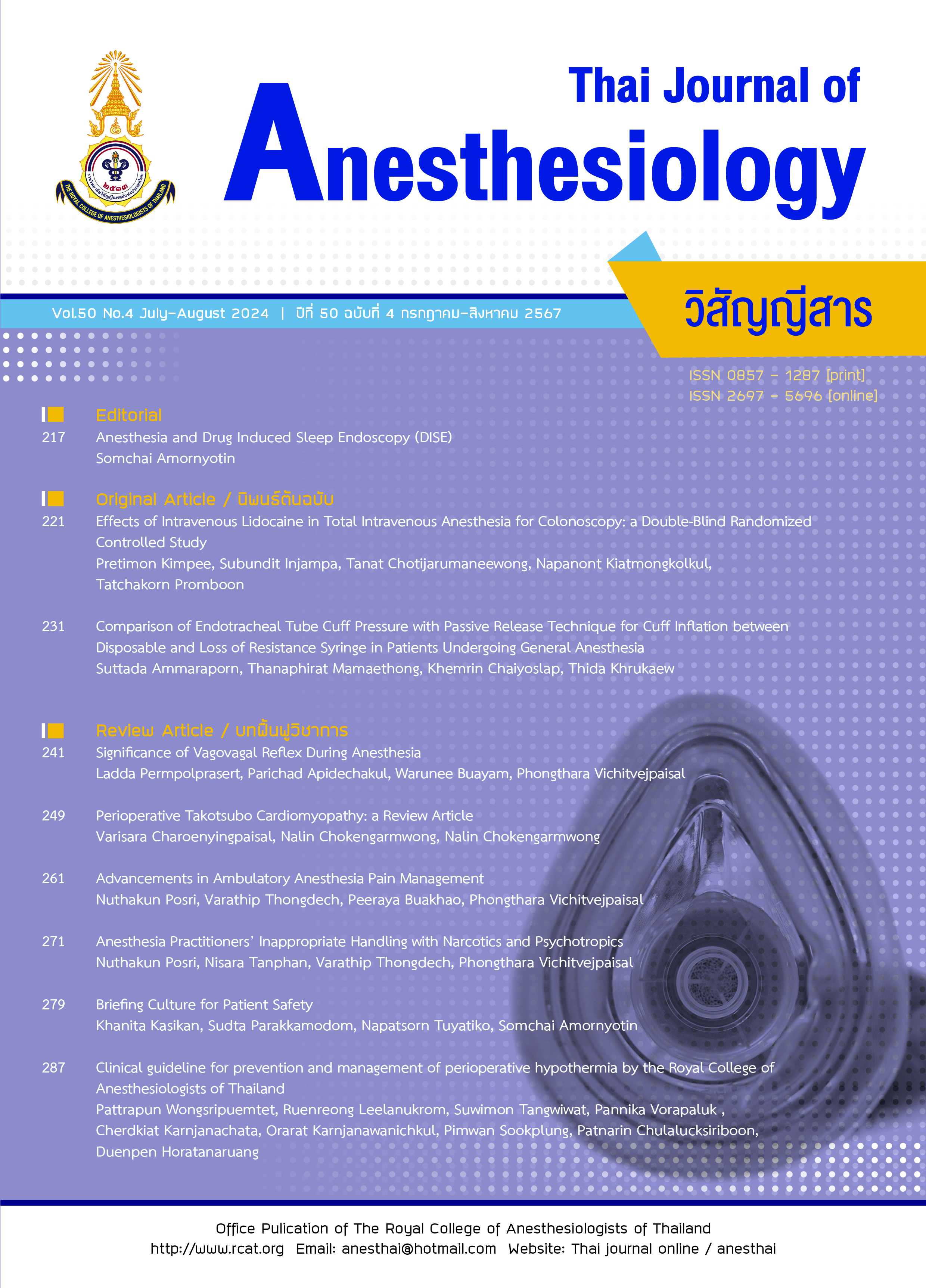Anesthesia Practitioners’ Inappropriate Handling with Narcotics and Psychotropics
Main Article Content
Abstract
In the complex landscape of healthcare, the phenomenon of anesthesia practitioners mishandling narcotics and psychotropics has surfaced as a pressing concern. This article delves into the enigmatic unraveling of this issue, shedding light on the implications it poses for patient safety and professional integrity. Anesthesia practitioners, entrusted with administering potent substances critical to pain management and patient well-being, stand at the intersection of ethical dilemmas and critical responsibilities. The article examines key points, emphasizing that patient safety is at immediate risk due to impaired decision-making and administration errors resulting from inappropriate substance use. Collaboration emerges as a cornerstone for addressing this challenge, necessitating cooperation among practitioners, institutions, regulatory bodies, and professional associations. Preventive measures and educational initiatives are underscored as pivotal strategies to mitigate substance abuse risks within this professional group.
Article Details

This work is licensed under a Creative Commons Attribution-NonCommercial-NoDerivatives 4.0 International License.
References
Samuelson ST, Bryson EO. The impaired anesthesiologist: what you should know about substance abuse. Can J Anaesth. 2017;64:219-35.
Narcotics Control Division, Food and Drug Administration. Act to implement the narcotics code 2021: narcotics code and narcotics case procedure act. 2nd ed. Bangkok: Aksorn Grphic and Design. 2022;p11-27.
Zhao S, Chen F, Feng A, Han W, Zhang Y. Risk factors and prevention strategies for postoperative opioid abuse. Pain Res Manag. 2019;2019:7490801.
Hilliard J. Central nervous system depressants. 2023 [cited 2023 Nov 29]. Available from https://www.addictioncenter.com/drugs/drug-classifications/central-nervous-system-depressants/.
De Gregorio D, Aguilar-Valles A, Preller KH, et al. Hallucinogens in mental health: preclinical and clinical studies on LSD, psilocybin, MDMA, and ketamine. J Neurosci. 2021;41:891-900.
Lowe H, Toyang N, Steele B, et al. The therapeutic potential of psilocybin. Molecules. 2021;26:2948.
Warner DO, Berge K, Sun H, Harman A, Wang T. Substance use disorder in physicians after completion of training in anesthesiology in the United States from 1977 to 2013. Anesthesiology. 2020;133:342-9.
Bryson EO. The opioid epidemic and the current prevalence of substance use disorder in anesthesiologists. Curr Opin Anaesthesiol. 2018;31:388-92.
Skipper GE, Campbell MD, Dupont RL. Anesthesiologists with substance use disorders: a 5-year outcome study from 16 state physician health programs. Anesth Analg. 2009;109:891-6.
Lefebvre LG, Kaufmann IM. The identification and management of substance use disorders in anesthesiologists. Can J Anaesth. 2017;64:211-8.
Misra U, Gilvarry E, Marshall J, et al. Substance use disorder in the anaesthetist: guidelines from the association of anaesthetists: guidelines from the association of anaesthetists. Anaesthesia. 2022;77: 691-9.
Biernikiewicz M, Taieb V, Toumi M. Characteristics of doctor-shoppers: a systematic literature review. J Mark Access Health Policy. 2019;7:1595953.
Sanabria E, Cuenca RE, Esteso MÁ, Maldonado M. Benzodiazepines: their use either as essential medicines or as toxics substances. Toxics. 2021;9:25.
Holze F, Vizeli P, Müller F, et al. Distinct acute effects of LSD, MDMA, and D-amphetamine in healthy subjects. Neuropsychopharmacol. 2020;45:462-71.
Agnoli A, Xing G, Tancredi DJ, Magnan E, Jerant A, Fenton JJ. Association of dose tapering with overdose or mental health crisis among patients prescribed long-term opioids. JAMA. 2021;326:411-9.
Dasgupta N, Funk MJ, Proescholdbell S, Hirsch A, Ribisl KM, Marshall S. Cohort study of the impact of high-dose opioid analgesics on overdose mortality. Pain Med. 2016;17:85-98.
Valdes JA. The concept of reentry in the addicted anesthesia provider. AANA J. 2014;82:95-100.
Andrade GO, Dantas RAA. Work-related mental and behaviour disorders in anesthesiologists. Rev Bras Anestesiol. 2015;65:504-10.
Schonwald G, Skipper GE, Smith DE, Earley PH. Anesthesiologists and substance use disorders. Anesth Analg. 2014;119:1007-10.
DeFord S, Bonom J, Durbin T. A review of literature on substance abuse among anaesthesia providers. J Res Nurs. 2019;24:587-600.
Forget P, Baldacchino A. Substance abuse by anaesthesiologists, shouldn’t we do more? Eur J Anaesthesiol. 2021;38:682-3.


